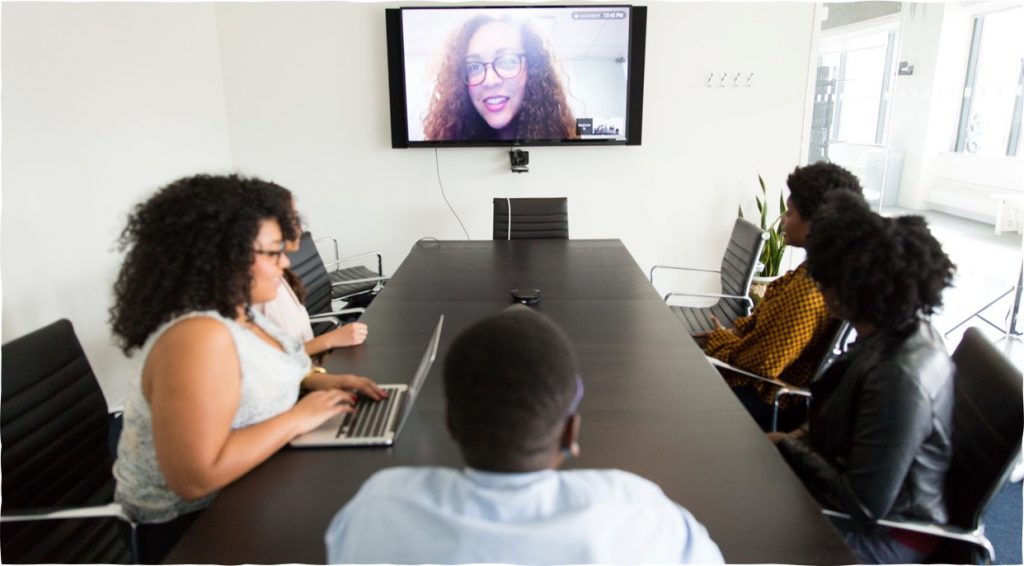Working from home can be a difficult transition. An important thing to keep in mind when making the move to a virtual workplace is gender. As a virtual women-driven organization, CanWaCH has thought a lot about gender equality and working from home. Here are some best practices for creating a gender-inclusive virtual workplace:

Women are often primary caregivers. As a result, flexibility is key. It is important to allow for flexible meeting options. We recommend setting core meeting hours (CanWaCH’s core hours are 10-3 pm ET), as well as a set lunch break (some CanWaCH team members are still working to establish a lunch routine). Another recommendation for creating a flexible virtual work environment is to have multiple options for joining a call (phone, video, etc.). CanWaCH team members have joined calls by Bluetooth while traveling to and from in-person work meetings, dropping kids off at school and more!
Finally, when selecting your virtual meeting platform, don’t forget to include accessible meeting platforms for persons with disabilities. Accessibility can also be incorporated into the language that we use in meetings. When addressing groups in meetings, encourage people to introduce themselves and share their pronouns. If you are chairing a meeting, find gender-neutral ways of addressing individuals as well as the group as a whole. For example, you can use terms such as “colleagues”, “folks” or “attention everyone” instead of ladies and gentlemen.

Similar to in-person meetings, sometimes virtual meetings can be dominated by a small number of voices. It can be difficult for young professionals to find their voice in virtual meetings. One recommendation is a virtual roundtable, where everyone is encouraged to share their thoughts. At CanWaCH, we “pass it on” to another team member during a meeting. It is also important to give participants an opportunity to decline to comment or share during the round table – sometimes there’s just nothing else to add! Another recommendation is to think outside of the box when it comes to participation! Most video conferencing platforms have a lot of fun features that are used to encourage participation from unusual suspects, this includes chat box features and polls.

Collecting questions in advance ensures that everyone who wants to participate has an opportunity to consider and share their input. And collecting feedback after a meeting, a webinar or an event is equally important. Following a major event, CanWaCH creates a google form that allows staff members to share feedback anonymously before a debrief meeting with the full team.

In a virtual workplace, it can be easy to put your head down, focus on your work and forget about others. It is important to make time for personal connections. At CanWaCH, team members connect on “water cooler chats”. These are short video meetings that block off time for colleagues to spend time getting to know one another. At the beginning of staff meetings, we also incorporate time for personal updates and ask team members to share how they are feeling or what’s on their minds, but only if they wish to do so. When team members feel more connected on a personal level, they also feel more comfortable approaching their virtual work environment to its full advantage while still being highly productive individuals.
Virtual workplaces are still a relevantly new concept, so it’s not an exact science! That’s why it is important to constantly check-in with team members and to adjust operations and procedures as needed. As a 100% virtual organization, CanWaCH is doing this every day. If you would like to talk more about creating an inclusive virtual work culture, please feel free to contact a CanWaCH team member.